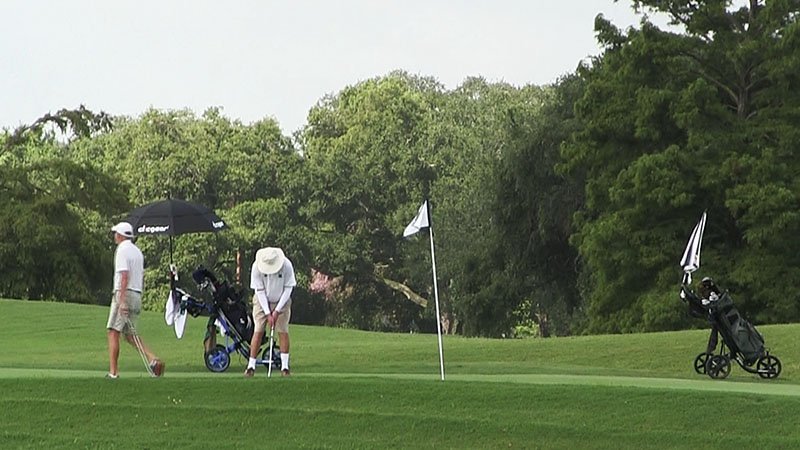Good or bad, records are made to be broken.
In the golf business, many of the records that have been broken in the past 20 years were record lows, not record highs. Record low rounds played, record number of course closings, record low number of people playing golf.
However, in the past few years, some of the benchmarks that have been eclipsed have been on the high end of the scale.
On the heels of Covid, nearly a million people entered the game and a record 518 million rounds were played in 2021.
There is more good news this year, according to Jim Koppenhaver of Pellucid Corp. and Stuart Lindsay of Edgehill Golf Advisors in their annual State of the Golf Industry report delivered Jan. 25 during the PGA Merchandise Show in Orlando.
The golfer base increased by 4 percent in 2023, from 21.9 million players to 22.8 million. That's a net increase of 2.3 million people since 2019, and is the highest number of golfers in the game since 26 million in 2010.
We haven't done a very good job of attracting the generation behind us. So part of our challenge as an industry is we're starting to age out. . . . We have a big gap in that next generation behind us that didn't take up golf like I did at (age) 24.
Rounds played reached a record high of 520 million, eclipsing the previous record of 518 million rounds set in 2000 and 2021, and revenue nationwide increased by 7 percent.
The number of men in the game increased by 800,000 (nearly 5 percent) to 16.8 million, while the number of women increased by about 100,000 (1.9 percent) to 6 million, according to the report.
For years, Baby Boomers carried the game on their collective backs, a statistic that is changing rapidly as many in that generation age out.
The good news is that younger players are picking up the game. The bad news is Gen Xers are not.
The number of Boomers in the game increased 4.8 percent to 4.9 million players. Those aged 35-54 increased by an eye-popping 8.4 percent to 6.6 million and 18-34s increased by 3.1 percent to 5.5 million. Generation X, or those aged 55-64, however, decreased by 3 percent to 3.7 million players.

"We haven't done a very good job of attracting the generation behind us," Koppenhaver said. "So part of our challenge as an industry is we're starting to age out.
"We have a big gap in that next generation behind us that didn't take up golf like I did at (age) 24."
The most-cited barriers to taking up the game and continuing with it have, historically, been time, cost and difficulty. None of which seem to be holding people back now, and Koppenhaver is not sure why.
"We haven't solved any of the three issues that people said kept them from playing golf," Koppenhaver said. "It still takes four-and-a-half hours to play. It costs more to play today, but we have some cover because everything costs even more than golf. And despite all the equipment we see on the (PGA show) floor and everything else that is supposed to make my game better, I still suck."
When the number of course closures outpaced openings in 2006, it represented an anomaly that had not occurred since the end of World War II. Since then, a net loss of courses each year has been the rule rather than the exception as closures have outnumbered openings for each of the past nine years - a necessary evil to bring the market toward equilibrium, which is an industry average of about 35,000 rounds per 18-hole equivalent, according to Koppenhaver and Lindsay.
Equilibrium was reached several years ago, with the average rounds per EHE hovering between 38,000 and 40,000 each of the past four years.
The golfer base increased by 4 percent in 2023, from 21.9 million players to 22.8 million. That's a net increase of 2.3 million people since 2019, and is the highest number of golfers in the game since 26 million in 2010.
Last year, a total of 78 courses closed nationwide, with just 26 openings for a net loss of 52. Since 2006, there has been a net loss of 1,664 18-hole equivalents for a total golf supply of 12,783 courses, according to the report.
With courses, on average, operating above equilibrium, the industry today could tolerate a net gain of another 2,000 EHE's (which is not going to happen) or losing 73 million rounds. Both give the industry, on the whole, with a good cushion.
Public-access courses led the way, representing 92 percent of all closures. Although closings are trending down, about 80 properties sold last year. That number has hovered between 80 and 110 for the past four years. About 36 percent of those sales were of private clubs, and another 31 percent were considered "premium public" properties.
That trend, Koppenhaver said, can be attributed to investors seeing little to no return on daily access value properties.
Another trend that emerged in 2023 is the return of real estate golf that include properties like the Greg Norman-designed Shell Bay course in Miami.
"There is a place for real estate golf," Koppenhaver said. "But not at the level we were doing it in '05."

